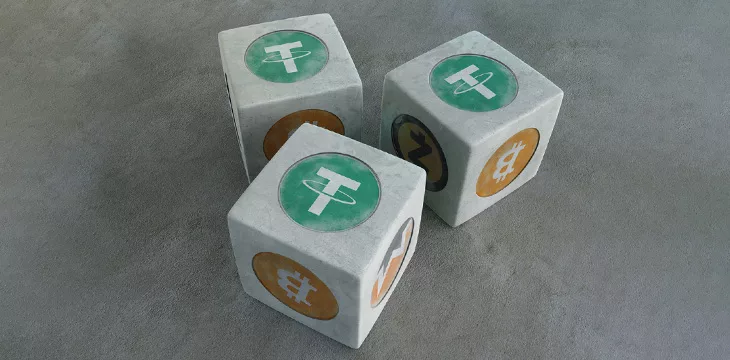|
Getting your Trinity Audio player ready...
|
Tether claims to have made nearly $1.5 billion in ‘net profit’ according to the latest Not An Audit™ by the company behind crypto’s most notorious stablecoin.
Tether Holdings Limited released its ‘independent auditors’ report’ on the reserves allegedly backing the $79.4 billion in USDT stablecoins issued as of March 31, 2023. That figure has since grown to $82.5 billion, around $3 billion more than at the end of the previous quarter, thanks to (a) the recent challenges endured by stablecoin rivals USDC and BUSD, and (b) the need to fuel wash trades on exchanges to artificially inflate the sagging fiat value of tokens like BTC.
As always, let’s get the disclaimers out. Tether’s ‘reports’ are not formal audits, despite their social media claims. Tether has never submitted its alleged reserves to an actual, unrestricted, third-party audit, despite years of promises to end that ignominious hot streak. (Scoop: Actual footage of Tether detailing its reserves.)
BDO Italia, the saps who agreed to put their names on these documents, admit their report is entirely based on the state of the Tether nation on March 31, 2023. BDO “did not perform procedures or provide any assurance at any other date or time in this report.”
That’s no small admission, given Tether’s history of shuffling funds in and out of accounts—including accounts belong to its sister company, the Bitfinex exchange—just long enough to demonstrate solvency by either party.
With those caveats out of the way, Tether claims that its total assets as of March 31 were $81.8 billion, exceeding its liabilities by over $2.4 billion. The cash and equivalents portion of these assets were $69.3 billion, of which $53 billion is in U.S. Treasury Bills (up from $39.2m in Q4).
Nuts, bolts and quarters down the back of the sofa
As for Tether’s less guaranteed assets, ‘precious metals’ have now grown to nearly $3.4 billion, warranting a standalone category for the first time (previously lumped in with corporate bonds and funds). For what it’s worth, the Tether Gold token (XAUt) has a market cap of only $500 million. The reserves also include over $2.1 billion in ‘other investments’ that go unexplained, so we’ll just say they’re magic beans.
Tether now holds around $1.5 billion in BTC, the amount of which went unspecified in previous reports. BTC’s fiat value is notoriously volatile (at least, when the wash trading bots aren’t as active), making this a curious choice to include in USDT’s reserves.
Tether’s ‘secured loans’ stand at $5.35 billion, about $500 million below Q4’s total. (Tether tried to claim “a 25% reduction” in the loans’ share of the overall reserves in percentage terms, but in dollar terms the reduction is only 8.6%.)
These loans to unspecified parties—which Tether has vowed to eliminate by the end of this year—are allegedly “over-collateralized by liquid assets subject to margin call and liquidation mechanism.” Guys, just say meme coins and be done with it.
Cash and bank deposits accounted for just over $481 million, a significant reduction from Q4’s $5.3 billion. This flight from banks likely reflects the massive withdrawals from California’s crypto-friendly Silvergate Bank following the implosion of the FTX exchange. Silvergate went belly-up in March, with Silicon Valley Bank and New York’s Signature Bank following not far behind. (SVB’s hiccups posed temporary anxiety at USDC’s issuer Circle, which kept $3.3 billion in cash at SVB.)
Tether was a customer of Signature’s 24/7 crypto settlement mechanism Signet but Tether denied having a Signature bank account. That’s partly true, in that Tether and Bitfinex previously used Signature accounts until Signature closed said accounts due to the two companies using “falsified documents and shell companies” to access U.S. dollar transactions, committing bank fraud and facilitating terrorist financing in the process.
Stark raving mad as hell and not going to take it anymore
Tether’s two public faces—chief technical officer Paolo Ardoino and general counsel Stuart Hoegner—were quick to crow about the Q1 stats. Ardoino claimed to be “thrilled with the tremendous success” Tether allegedly achieved, while calling the alleged $1.48 billion profit “a testament to the strength and stability of our platform.”
Less impressed was John Reed Stark, a former chief of the internet enforcement division of the U.S. Securities and Exchange Commission (SEC). On Tuesday, Stark called Tether “a Mammoth House of Cards,” emphasizing that its reserves “remain unaudited, unconfirmed and therefore dubious, leaving Tether’s customers to grapple with Tether’s remarkably condescending and ineffective public relations blather, hype and bluster.”
Stark rubbished Tether’s attestation as a “kind of ‘unverified snapshot’ [that] would never pass any sort of regulatory muster… Audits are methodically designed to look for potential risks, while attestations only evaluate whether the data being examined by the ‘attestator’ is accurate at that precise moment in time. Hence, any iteration of attestation is pretty useless, especially as a matter of due diligence.”
Referring to Hoegner’s now two-year-old promise that a professional audit was “months, not years” away, Stark observed that “if Tether’s books and records are so disorganized, complex and challenging that it takes quarters or even years to make heads or tails of them, that speaks volumes as to Tether’s integrity and trustworthiness.”
On Wednesday, an oblivious Ardoino responded to Stark by tweeting a link to Tether’s latest attestation. Stark then responded to Ardoino, reiterating that Stark remained “confounded how an $80B financial firm can do business with confidence without an official audit published with certified financial statements.”
Stark also expressed confusion over why Tether’s CTO is the one who speaks for Tether’s financial affairs, not a chief financial officer. Tether’s CFO is Giancarlo Devasini, a former plastic surgeon with a murky business history and makes fewer public appearances than Sasquatch.
Stark reminded Ardoino that Tether has been caught lying about its reserves before. Stark closed by warning his audience that by “hijacking bona-fide regulatory labels, together with a sleek website, flashy commercials and attractive customer-interphase [sic], unregistered crypto-firms create a counterfeit veneer of assurances, integrity, expertise and regulatory supervision.”
Stark didn’t reference it, but Tether’s own terms of service expressly state that, regardless of whether its reserves are real or imagined, Tether can refuse to redeem your USDT for cash “for any reason (or for no reason) at any time.” Think about that the next time Ardoino starts spouting off about Tether’s ‘strength and stability.’
Typically, Ardoino hasn’t responded to Stark, although he’s in Europe, so perhaps he’s still asleep, dreaming contentedly of how Devasini’s scalpel can give Paolo a new face when the Tether gang is finally forced to go on the lam.
Follow CoinGeek’s Crypto Crime Cartel series, which delves into the stream of groups—from BitMEX to Binance, Bitcoin.com, Blockstream, ShapeShift, Coinbase, Ripple,
Ethereum, FTX and Tether—who have co-opted the digital asset revolution and turned the industry into a minefield for naïve (and even experienced) players in the market.

 12-22-2025
12-22-2025 




